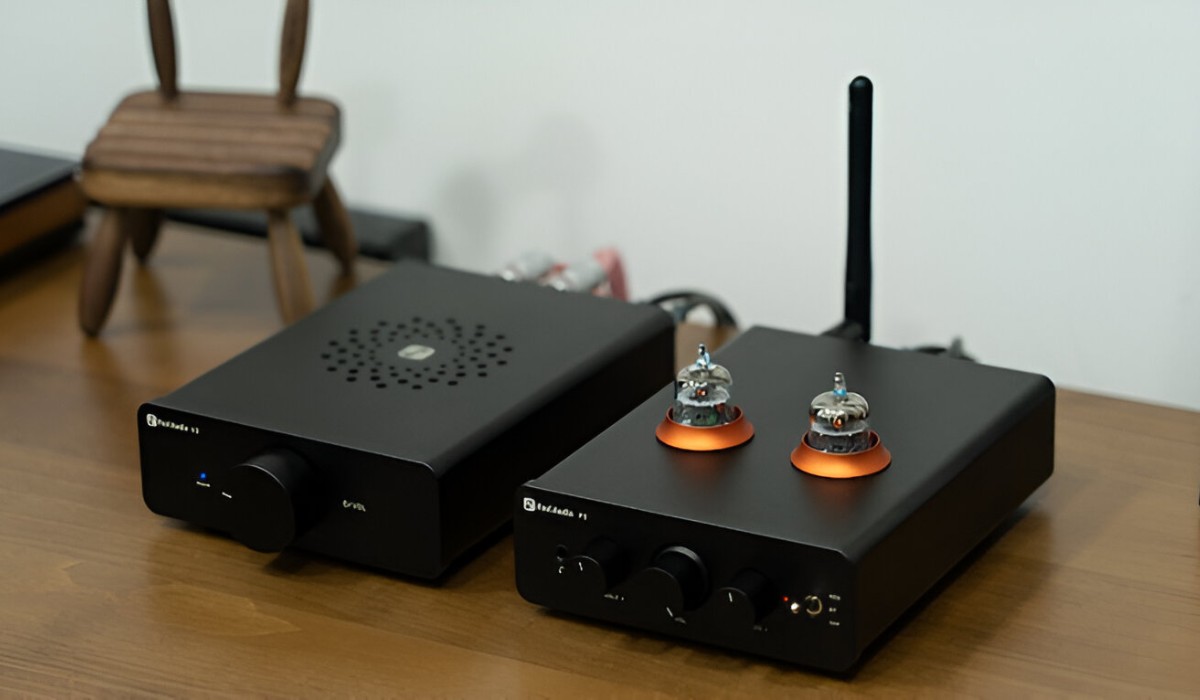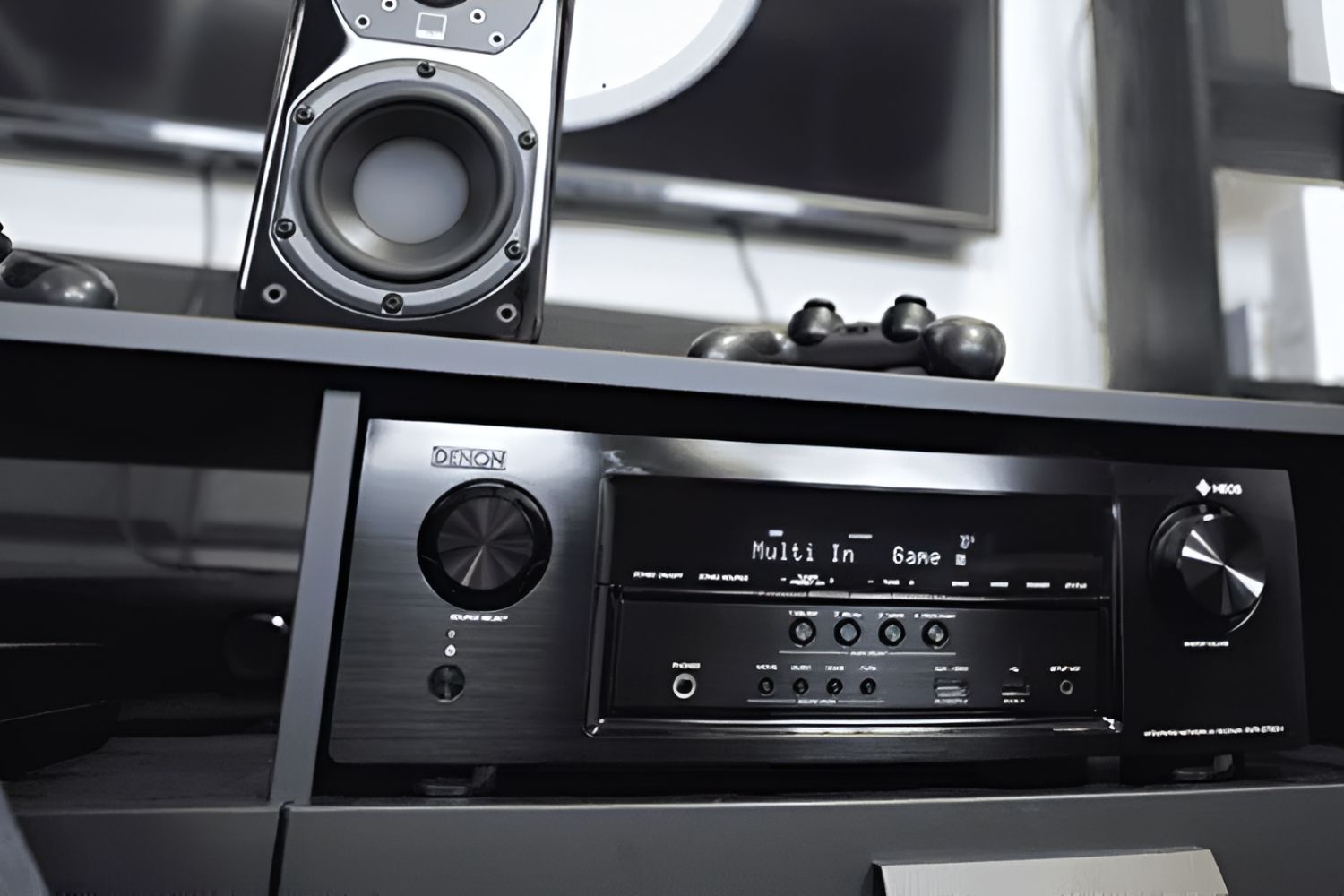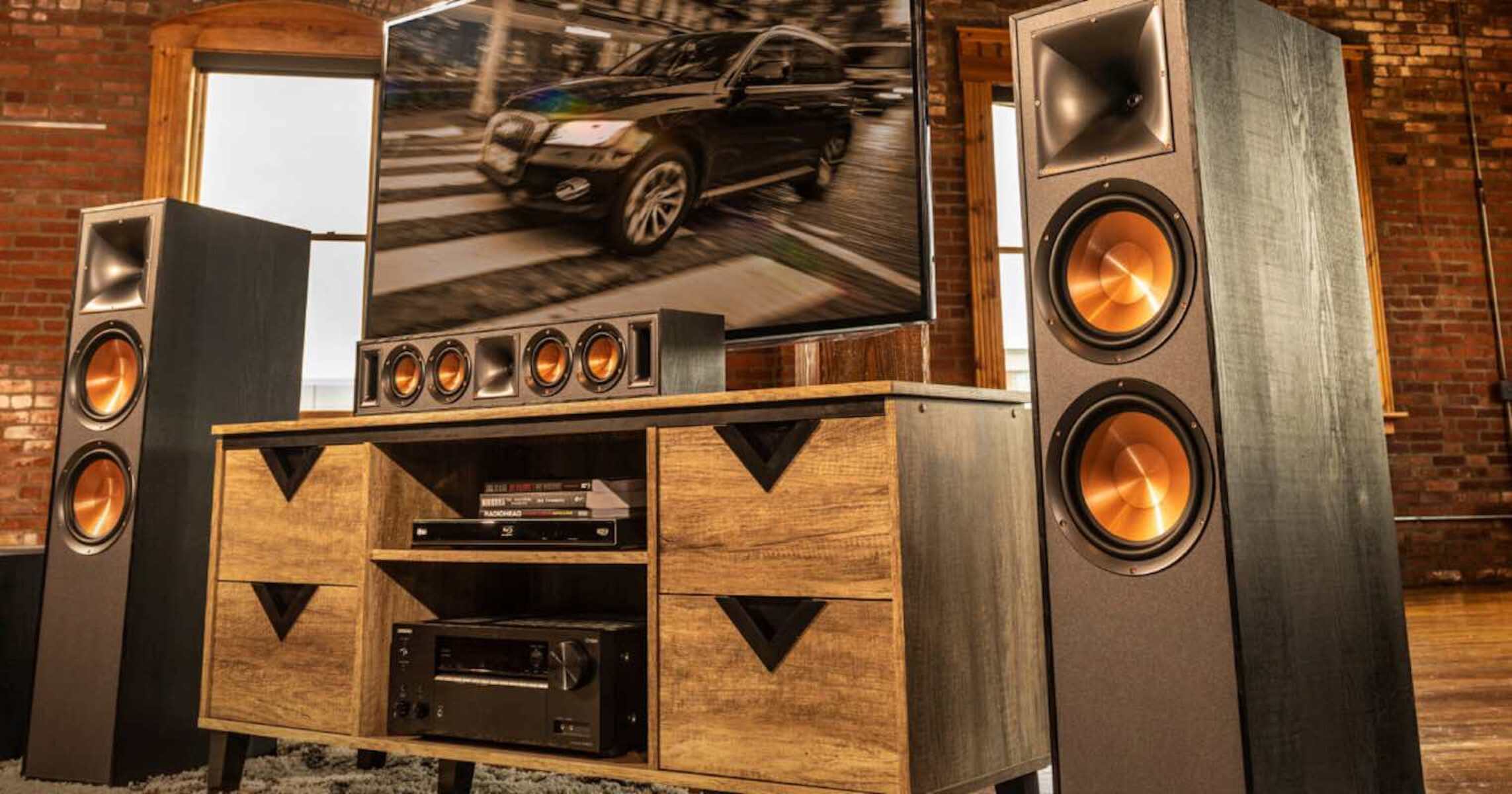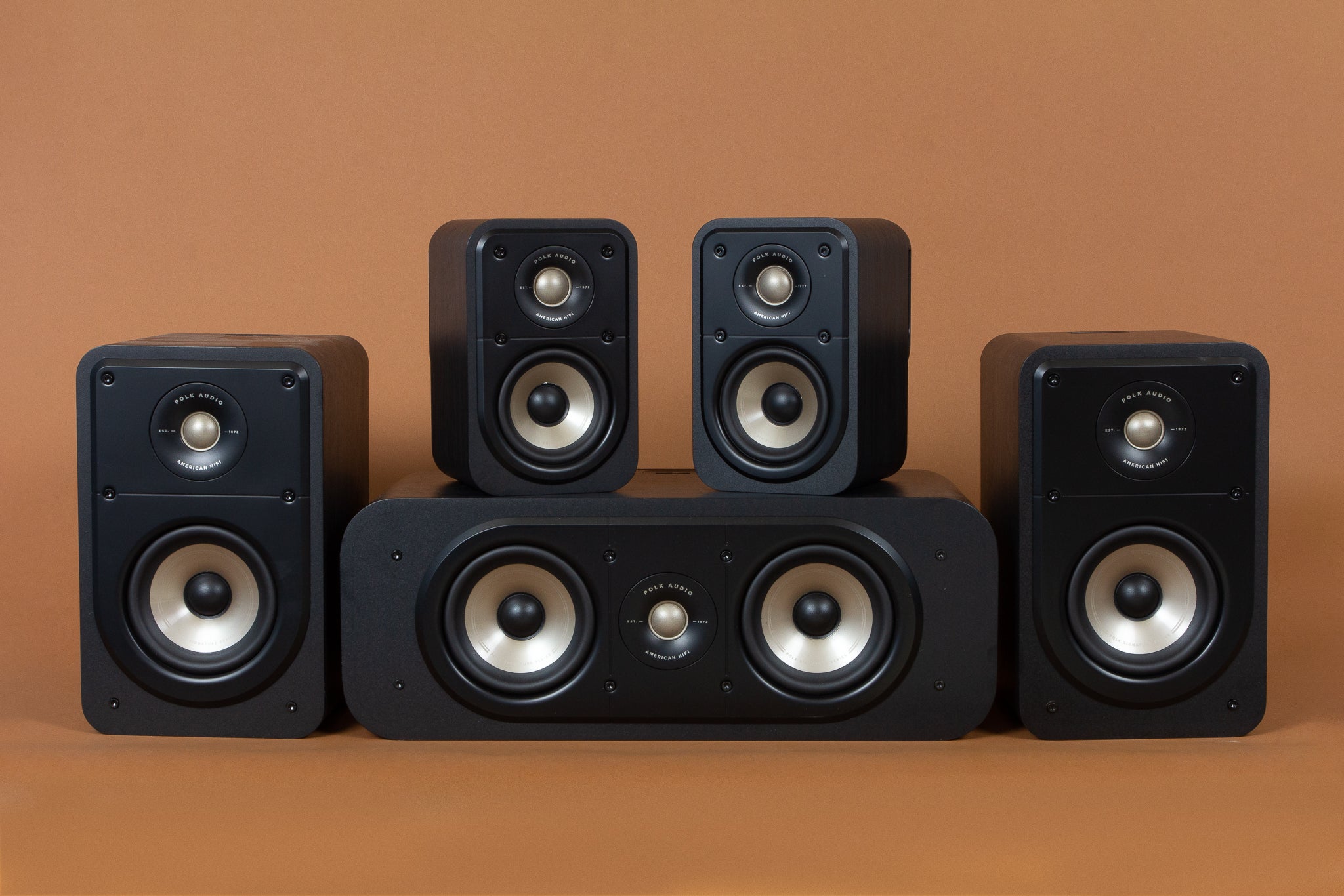Introduction
Understanding the channels on an AV receiver is essential for optimizing your home theater audio experience. Each channel plays a unique role in delivering immersive sound, creating a captivating environment for enjoying movies, music, and games. Whether you're a seasoned audiophile or a newcomer to the world of audio equipment, grasping the significance of these channels can enhance your overall entertainment setup.
In this comprehensive guide, we'll delve into the significance of each channel on an AV receiver, shedding light on their individual functions and contributions to the overall audio landscape. From the front channels that anchor the soundstage to the specialized subwoofer channel that adds depth and impact, each component plays a crucial role in delivering a multi-dimensional audio experience. We'll also explore the advancements in audio technology, such as Dolby Atmos, and how they have expanded the possibilities for creating a truly immersive audio environment.
By the end of this guide, you'll have a deeper understanding of the channels on an AV receiver, empowering you to make informed decisions when setting up and optimizing your home theater system. So, let's embark on this journey to unravel the mysteries behind the channels on an AV receiver and unlock the full potential of your audio setup.
Front Channels
The front channels, typically labeled as the left and right speakers in a 2.1 or 5.1 setup, serve as the foundation of the audio experience. Positioned strategically to the left and right of the screen or primary listening area, these channels are responsible for delivering a sense of direction and perspective within the audio landscape. By reproducing a wide range of frequencies, they create a spacious soundstage that immerses the listener in the audio environment.
These channels handle a diverse array of audio elements, from dialogue and musical melodies to ambient sound effects and directional cues. When watching a movie, the front channels bring characters’ voices to life, while also conveying the nuances of the soundtrack and environmental sounds. In gaming, they provide spatial awareness, allowing players to pinpoint the source of in-game sounds and immerse themselves in the virtual world.
Furthermore, the front channels play a crucial role in reproducing stereo and multi-channel audio formats, ensuring that the listener experiences the intended sonic depth and dimensionality of the content. Whether it’s the soaring crescendo of a symphony orchestra or the subtle nuances of a jazz ensemble, these channels faithfully reproduce the sonic intricacies, enriching the overall listening experience.
When setting up your front channels, positioning is paramount. Placing the speakers at ear level and ensuring they are equidistant from the primary listening area can significantly enhance the stereo imaging and sonic coherence. Additionally, optimizing the crossover frequency and calibrating the volume levels of the front speakers can further refine the audio output, delivering a cohesive and enveloping soundstage.
As the cornerstone of the audio system, the front channels lay the groundwork for a captivating sonic experience, setting the stage for the subsequent channels to complement and enrich the overall audio immersion.
Center Channel
The center channel in an AV receiver setup is a pivotal element that anchors the dialogue and central sound imaging, ensuring clear and intelligible vocal reproduction. Positioned either above or below the display screen, the center channel speaker serves as the focal point for conveying crucial audio information, particularly dialogue in movies, TV shows, and video games.
When characters engage in on-screen conversations or pivotal plot developments unfold, the center channel assumes the responsibility of faithfully reproducing the characters’ voices, capturing the nuances of their speech, and conveying the emotional resonance of their dialogue. This is crucial for maintaining a coherent and immersive audio experience, especially in larger home theater setups where optimal positioning and balance are essential.
Moreover, the center channel plays a vital role in enhancing the sonic localization of on-screen action and sound effects, contributing to a more realistic and engaging audio environment. Whether it’s the rumble of an approaching train, the roar of a cinematic explosion, or the subtle rustling of leaves in a quiet scene, the center channel ensures that these audio elements are accurately positioned and seamlessly integrated into the overall soundstage.
When configuring the center channel, it’s imperative to align it with the primary listening area and ensure that it complements the front and surround speakers to create a cohesive sonic panorama. Calibration of the center channel’s volume level and fine-tuning of the crossover frequency can further optimize its performance, ensuring a seamless transition of sound across the front soundstage.
By providing a dedicated channel for dialogue and central sound imaging, the center channel elevates the overall audio fidelity, fostering a more immersive and engaging entertainment experience. Its specialized role in reproducing vocal nuances and anchoring on-screen action underscores its significance in optimizing the sonic coherence of a home theater setup.
Surround Channels
The surround channels in an AV receiver configuration play a pivotal role in enveloping the listener in a rich, multi-dimensional audio environment, enhancing the immersive quality of movies, music, and games. Positioned to the sides or rear of the primary listening area, these channels contribute to the spatial realism and ambient depth of the audio experience, creating a captivating sense of envelopment and sonic immersion.
With the advent of multi-channel audio formats such as Dolby Digital and DTS, the surround channels have become integral in conveying ambient soundscapes, environmental effects, and directional audio cues. Whether it’s the gentle rustling of leaves in a forest scene, the immersive reverberations of a concert hall, or the immersive sounds of a bustling cityscape, the surround channels bring these sonic elements to life, elevating the overall sense of realism and engagement.
Furthermore, in the realm of gaming, the surround channels contribute to spatial awareness and positional audio, allowing players to discern the direction of in-game sounds, immerse themselves in the virtual environment, and gain a competitive edge through enhanced audio cues. This adds a new dimension to the gaming experience, heightening the sense of realism and creating a more immersive gameplay environment.
When configuring the surround channels, precise placement and calibration are essential to achieve optimal sonic dispersion and seamless integration with the front and center channels. By fine-tuning the surround channel levels and ensuring proper synchronization with the front soundstage, a cohesive and enveloping audio panorama can be achieved, enhancing the overall sonic coherence and immersive quality of the home theater setup.
In essence, the surround channels serve as the sonic architects of the home theater environment, sculpting a multi-dimensional audio landscape that captivates and engrosses the listener. Their ability to convey spatial depth, ambient realism, and directional precision elevates the overall audio experience, transforming ordinary entertainment into a captivating auditory journey.
Subwoofer Channel
The subwoofer channel, often referred to as the “.1” in a 2.1 or 5.1 audio setup, is a fundamental component that adds depth, impact, and visceral energy to the audio experience. Specialized in reproducing low-frequency sound waves, the subwoofer channel is dedicated to handling the deep bass notes, infra-bass effects, and low-frequency transients that contribute to a more dynamic and immersive sonic landscape.
One of the primary roles of the subwoofer channel is to reproduce the low-frequency effects (LFE) track in movies, which encompasses the rumbling of explosions, the seismic impact of action sequences, and the thunderous reverberations of intense cinematic moments. By faithfully reproducing these low-frequency elements, the subwoofer channel enhances the visceral impact of on-screen action, adding a palpable sense of weight and power to the audio experience.
Moreover, in music, the subwoofer channel enriches the sonic tapestry by reproducing the deep bass lines, resonant drum beats, and low-frequency harmonics, infusing the music with a sense of depth and physicality. Whether it’s the pulsating rhythm of electronic dance music, the thunderous impact of orchestral percussion, or the resonant bass notes of a live concert recording, the subwoofer channel amplifies the low-frequency components, elevating the overall musical immersion.
When integrating the subwoofer channel into the audio setup, precise placement and calibration are crucial to achieve optimal bass response and seamless integration with the front and surround channels. By fine-tuning the subwoofer’s crossover frequency, phase, and volume level, the low-frequency output can be tailored to complement the overall audio landscape, ensuring a cohesive and balanced sonic presentation.
In essence, the subwoofer channel serves as the foundation of the audio system, underpinning the sonic impact and depth of the entire audio experience. Its ability to reproduce low-frequency elements with precision and power elevates the overall audio immersion, adding a tactile dimension to movies, music, and games, and creating a more compelling and engaging entertainment environment.
Dolby Atmos Channels
Dolby Atmos represents a revolutionary advancement in audio technology, redefining the traditional concept of channel-based audio by introducing a three-dimensional soundstage that envelops the listener in a sphere of multidimensional audio. Unlike conventional surround sound systems that rely on discrete channels, Dolby Atmos introduces the concept of audio objects and overhead channels, allowing sound to be precisely placed and moved in a three-dimensional space, transcending the limitations of traditional channel-based audio.
At the heart of Dolby Atmos are the overhead channels, which introduce a vertical sonic dimension to the audio environment, creating a sense of height and immersion that expands the sonic canvas beyond the confines of traditional speaker placements. By incorporating overhead speakers or ceiling-mounted speakers, Dolby Atmos enables sound designers to position audio objects above the listener, simulating the sensation of sound emanating from a point in space, whether it’s the pitter-patter of raindrops, the immersive reverberations of a helicopter overhead, or the ethereal echoes of a celestial choir.
Furthermore, Dolby Atmos introduces the concept of audio objects, allowing sound designers to precisely position and move individual audio elements within the three-dimensional space, creating a more lifelike and immersive audio experience. This level of sonic precision and spatial accuracy enhances the sense of realism and immersion, allowing for a more captivating and enveloping audio environment that transcends the limitations of traditional channel-based audio.
When configuring a Dolby Atmos setup, precise speaker placement and calibration are essential to achieve optimal sonic immersion and spatial accuracy. By integrating overhead speakers and ensuring seamless integration with the existing surround sound system, a cohesive and enveloping three-dimensional audio environment can be achieved, elevating the overall audio experience to new heights.
In essence, Dolby Atmos channels represent a paradigm shift in audio technology, ushering in a new era of immersive and lifelike audio experiences. By introducing overhead channels and audio objects, Dolby Atmos transcends the constraints of traditional channel-based audio, creating a captivating and multidimensional sonic environment that captivates and engrosses the listener, redefining the boundaries of home entertainment audio.
Conclusion
As we conclude our exploration of the channels on an AV receiver, it becomes evident that each component plays a unique and indispensable role in shaping the overall audio experience. From the foundational front channels that anchor the sonic landscape to the immersive capabilities of Dolby Atmos, the channels work in harmony to create a captivating and multi-dimensional audio environment that enriches our entertainment pursuits.
The front channels serve as the cornerstone of the audio system, providing stereo imaging and a spacious soundstage that envelops the listener in a rich sonic panorama. Their ability to convey dialogue, music, and directional cues lays the foundation for a compelling audio experience, setting the stage for the subsequent channels to enhance and enrich the sonic landscape.
The center channel assumes the crucial role of anchoring dialogue and central sound imaging, ensuring clear and intelligible vocal reproduction while enhancing the sonic localization of on-screen action. Its specialized focus on faithfully reproducing vocal nuances and anchoring pivotal audio elements underscores its significance in optimizing the sonic coherence of a home theater setup.
Meanwhile, the surround channels elevate the audio immersion by enveloping the listener in a rich, multi-dimensional sonic environment, contributing to spatial realism, ambient depth, and directional precision. Their ability to convey ambient soundscapes, environmental effects, and directional audio cues adds a new dimension to the audio experience, enhancing the sense of realism and engagement.
The subwoofer channel, with its dedicated focus on reproducing low-frequency sound waves, adds depth, impact, and visceral energy to the audio experience, enriching the sonic tapestry with palpable bass notes and infra-bass effects. Its ability to enhance the visceral impact of on-screen action and imbue music with a sense of depth and physicality underscores its fundamental role in shaping the overall audio immersion.
Lastly, Dolby Atmos channels represent a paradigm shift in audio technology, ushering in a new era of immersive and lifelike audio experiences. By introducing overhead channels and audio objects, Dolby Atmos transcends the constraints of traditional channel-based audio, creating a captivating and multidimensional sonic environment that captivates and engrosses the listener, redefining the boundaries of home entertainment audio.
By understanding the significance of each channel on an AV receiver, we empower ourselves to make informed decisions when setting up and optimizing our home theater systems, ensuring that we unlock the full potential of our audio setups and immerse ourselves in captivating auditory journeys that elevate our entertainment experiences.

























